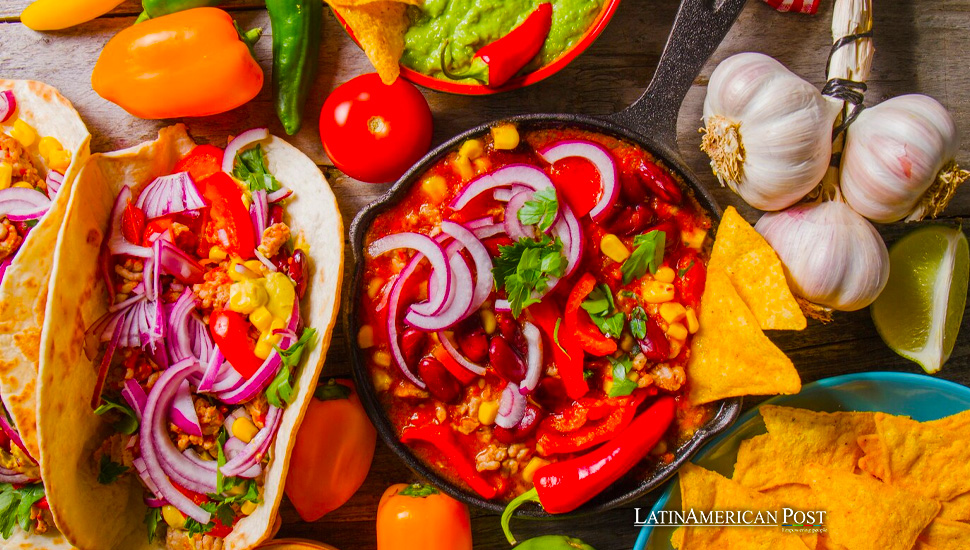Mexican Cuisine Dominates U.S. Restaurants, Pew Study Finds

Mexican cuisine has woven itself deeply into the fabric of American dining, becoming a staple across the United States. A striking 11% of all restaurants in the U.S. predominantly serve Mexican food, according to a recent analysis by the Pew Research Center. This study underscores Mexican eateries’ significant presence and popularity, which are found in 85% of the country’s 3,244 counties.
Mexican-American Culinary Disparity: A Pew Study Analysis
Despite Mexican-Americans being the largest Hispanic group in the U.S., with 37.2 million people, the Pew study also reveals a curious disparity: while 40% of Latinos in the U.S. have non-Mexican origins, only 2% of restaurants serve Hispanic cuisines other than Mexican. The more common types of non-Mexican Hispanic restaurants include Caribbean, Cuban, Peruvian, Salvadoran, and Spanish cuisines. Yet, none of these individually represent more than 1% of U.S. restaurants.
Mexican restaurants are noted for their affordability. Among those with available pricing data, 61% are rated as single-dollar-sign establishments on Yelp’s four-point pricing scale, indicating their budget-friendly nature. Less than 1% of Mexican restaurants nationwide – only 251 – are rated with three or four-dollar signs, pointing to a higher-end dining experience.
Regional Concentration in California and Texas
The prevalence of Mexican restaurants is particularly notable in California and Texas, states with the largest Mexican-American populations. In California, 22% of all Mexican restaurants in the U.S. are located, while Texas hosts 17%. Los Angeles County alone boasts 30% of California’s Mexican eateries. In Texas, Harris County, which includes Houston, is home to 17% of the state’s Mexican restaurants, with Bexar (San Antonio) and Dallas Counties each housing 9%.
Other states with significant numbers of Mexican restaurants include Florida, New York, and Illinois, each accounting for 4% of the national total. This distribution reflects the broader demographic trends in these states, as the Washington-based research center reported using data from SafeGraph.
The study also highlights the particular prominence of Mexican restaurants in states bordering Mexico. These establishments in New Mexico, Texas, Arizona, and California represent 22%, 20%, 18%, and 17% of all restaurants, respectively.
Mexican cuisine in the U.S. varies widely, with 22% of these restaurants categorized as fast food, 12% specializing in tacos, 8% as food trucks or carts, and 6% offering Tex-Mex cuisine. Despite this variety, affordability remains a common theme, with 61% falling into the lowest price category on Yelp.
The study further notes that while many non-Mexican restaurants offer Mexican dishes, the reverse is less common. For instance, 38% of Salvadoran restaurants also serve Mexican cuisine, but only 3% of Mexican restaurants offer other types of Hispanic dishes.
Hispanic Eateries in Specific States
These Hispanic eateries are particularly numerous in states like Florida (especially in Miami-Dade County), New York, and New Jersey, particularly near New York City. Yet, even in these areas, Mexican restaurants make up a comparable, and often larger, portion of the dining landscape compared to establishments serving other types of Hispanic cuisine.
The Pew Center’s findings paint a vivid picture of the American culinary scene, where Mexican cuisine has not only found a place but has flourished extensively. From fast-food joints to high-end dining, Mexican restaurants cater to a wide range of palates and budgets, reflecting this beloved cuisine’s diverse and adaptable nature. The study’s insights offer a glimpse into how cultural flavors merge and thrive, particularly in a nation as diverse as
This dominance of Mexican cuisine in the American restaurant landscape is a testament to the deep cultural integration and the broad appeal of these flavors. Mexican restaurants across the vast majority of U.S. counties indicate a culinary preference and the critical role that Mexican-American culture plays in shaping American society.
However, the study also highlights the underrepresentation of other Hispanic cuisines in the U.S. dining scene. The limited presence of restaurants serving Caribbean, Cuban, Peruvian, Salvadoran, and Spanish dishes points to an opportunity for greater culinary diversity and exploration of the rich tapestry of Hispanic cultures.
Affordability as a Key Factor
The affordability of Mexican cuisine, as evidenced by the predominance of single-dollar sign ratings, also speaks to its accessibility. This aspect of Mexican dining makes it a go-to choice for a broad demographic encompassing various socio-economic backgrounds.
Moreover, the study’s finding on the geographical distribution of these restaurants highlights the historical and ongoing migration trends. The concentration of Mexican restaurants in states with significant Mexican-American populations underlines the role of food in maintaining cultural ties and identity.
Also read: Mexican Business Community Urges Completion of Pension Reform
The Pew Research Center’s analysis offers a comprehensive overview of the prevalence and characteristics of Mexican cuisine in the U.S. restaurant industry. It not only underscores the popularity and accessibility of Mexican food but also indicates areas where the culinary landscape can grow and diversify.
As America’s palate continues to evolve, Mexican cuisine’s prominent place at the table is both a reflection of its past and a signal towards a more diverse culinary future.




